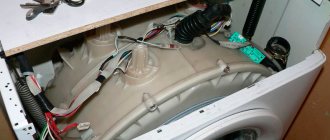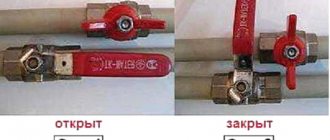The ideal operation of a gas boiler is considered to be a mode when the main burner burns stably with the flame as low as possible, i.e. The heat transfer from such combustion corresponds to the needs of the heated house. Otherwise, when a gas boiler is often turned on and off, its wear increases and gas consumption increases, since it is greater at the time of startup.
It is impossible to determine exactly why constant clocking occurs without seeing the boiler and the heating system diagram. However, we will consider all possible reasons for the frequent switching on and off of a gas boiler in descending order of their frequency, and we will give recommendations for solving the problem.
Reasons for clocking
Clocking indicates the frequency of switching on of the device that provides heating of the thermal fluid. In the absence of external control devices connected to the equipment, most often the time interval between turning on the boiler does not exceed 10 minutes, and by default such indicators are only three minutes. Frequent switching on and off is not a recommended mode for operating a gas boiler.
In order to maximize the economical consumption of blue fuel, it is advisable to choose the option of continuous operation of equipment with compensation for heat losses. Among the main problems that provoke the clocking of the unit, the following can be noted:
- overheating of the device under high power conditions;
- insufficient gas supply pressure;
- incorrect installation of the thermostat;
- various pump breakdowns;
- filter clogging.
In small rooms, excessive gas consumption is common, so when choosing equipment it is very important to correctly calculate its technical indicators and basic operational characteristics. Among other things, the configuration parameters of different models often differ significantly, which requires a mandatory and very careful study of the instructions before configuring the equipment.
Let's look at the main reasons for the boiler constantly turning on and off.
Operation and setup
Operating requirements are detailed in the user manual, which must be carefully read before using the unit.
The key to successful operation is competent and high-quality installation. Floor-standing models are installed on a non-combustible substrate (a layer of asbestos, on top of which a metal sheet is laid), and wall-mounted boilers are hung on brackets secured with anchor bolts.
Only strong load-bearing walls are suitable for installation; temporary and plasterboard partitions for hanging are prohibited.
Boiler tuning consists of adjusting factory settings designed to increase efficiency and stability of operation.
The boiler must be adjusted by a specialist from the warranty workshop . Doing the work yourself can damage the unit.
In addition, unauthorized work with gas equipment is an offense and can be punished within the competence of the gas service.
Download instructions
Download instructions for the Danko gas boiler.
High boiler power
Operating a gas boiler at maximum power levels causes rapid heating, as well as pulsed operation of the unit. The heating level is determined by the modulation of the gas burner. When receiving a heated return, the boiler goes into standby mode, and as the return cools down, the boiler turns on again. Due to the high starting power of the boiler in the off-season, the problem of turning the gas boiler on and off occurs most often.
A room thermostat can solve the problem. In this case, regulation is carried out automatically. If the room temperature is reached, the thermostat will signal the boiler to turn off. The heating system cools down faster than the air temperature. Therefore, the boiler will turn on less often and work longer.
It is of no small importance to determine the optimal power of the equipment, taking into account the region of residence, the total area of the heated room and the degree of insulation of the building. Currently, condensing boilers used in low-temperature heating systems have proven themselves to be the best. This reliable option is characterized by heating the coolant in the return circuit within 60°C.
You asked, we answer
There are many nuances associated with the operation of boilers, and therefore many users ask questions regarding their correct operation.
Among them:
- Which brand is best? – some of the best models are Vaillant, Protherm devices, Bosch gaz 6000W double-circuit boilers. They are distinguished by high productivity, long service life, efficient heating of rooms up to 200 m², and can withstand power surges well;
- Which heat exchanger is better to install? – the cast iron heat exchanger is considered the most durable;
- Why does a wall-mounted gas boiler often turn off? – the cycle is provoked by incorrect installation;
- Does the boiler make noise during operation? – heating systems operate almost silently;
- How to calculate power? – power is considered 1 kW per 10 m2, + 20%. If a double-circuit boiler is selected, add 5 kW per tap, 10 kW per bathroom, 7 kW per shower to the calculation;
- Why is a floor-standing boiler more expensive than a wall-mounted one? – simple floor-standing units have a thick cast-iron heat exchanger, which itself is quite expensive. However, its advantage is the possible partial replacement of a separate section, which is much cheaper than replacing the entire heat exchanger.
Should a gas boiler turn off during normal operation?
The boilers are equipped with electronics. After connection, the temperature is set. Upon reaching the set point, the boiler turns off and lights up again when the system cools down. This is an absolutely normal process. You can only suspect something is wrong if it happens too often. In this case, you need to look for the problem or call a specialist to determine the reasons why the gas boiler constantly turns on and off.
Why does a gas boiler often turn on and off in heating mode?
A situation where a gas boiler gains temperature and quickly turns off will indicate a problem with the equipment. If it was just purchased, then there may be several reasons - factory defects, installation errors, improper operation.
In the first case, the breakdown is detected immediately after installation. The second and third options are discovered only during use. Then you notice the gas boiler turning on frequently. A lot depends on the design of the heating system. A well-installed boiler will provide warmth, coziness and comfort in the home.
Weak gas pressure
The level of fuel pressure in the gas line undergoes significant changes at different times of the year. With the onset of winter, as a rule, the maximum number of users is connected to the centralized gas pipeline, so the pressure in the system decreases to a minimum. In this case, the burner without modulation continues to function, but the operation of the device is noticeably reduced. Today, various flame modulation options are used:
- hydraulic type - direct relationship between flow and constant temperature;
- electronic type – indirect relationship based on a temperature sensor;
- ionization type - current in a closed circuit with a signal to the control unit.
At low gas pressure, the boiler may turn off and turn on again due to the fact that the system is not warmed up. But most often today, gas boilers simply go into error states and do not work until you reset it.
How to deal with problems
If the boiler goes out and does not light up again, check the quality of ventilation in the room. This is a common cause of problems for atmospheric models “Proterm”, “Navien”, “Ariston”, “Bosch” with an open combustion chamber, because they take combustion air from the room.
- Organize high-quality ventilation in the room;
- Install ventilation valves on sealed window packages;
- Open the window in the boiler room for air flow.
Check the presence of draft in the boiler chamber. To do this, light a match and bring it to the control window or chimney outlet. If there is draft, the flame will deviate to the side. If not present, it will burn evenly. In the latter case, a chimney inspection is required.
This is excess, deficiency or backdraft. All this leads to the fading of the wick and automatic shutdown of the equipment.
Backdraft or blowing out occurs due to weather conditions: strong winds, pressure changes lead to the burner extinguishing. During installation, take into account the requirements for the height of the chimney:
- The height of the pipe on a flat roof is at least 50 cm;
- With a distance from the roof ridge of 1.5 meters - from 50 cm above the ridge;
- At a distance of 1.5–3 meters - level with the ridge.
Compliance with these parameters will help to avoid blowing and backdraft.
Excess air flow occurs with a powerful kitchen hood or ventilation. The solution is to turn off the hood while the boiler is operating.
Lack or absence of traction provokes:
- Blockages. Occurs in stationary chimneys. Clear the mine of leaves, debris, and construction debris. Fixed and coaxial pipes can become covered with ice in winter. Along with combustion products, hot steam escapes into the street, condensation forms, which freezes on surfaces. Insulate the chimney.
- Damage, burnout of the pipe. Only replacing the chimney will help.
Does the dual-circuit device “AOGV”, “Beretta” or “Vailant” turn off and not turn on? This is possible when the fuel supply is unstable. For the same reason, the burner does not light the first time. First of all, check:
- Pipes and joints for gas leaks. To do this, lubricate them with soap foam. If bubbles appear, there is a leak. Then turn off the valves, open the window and call the gas workers.
- Counter. If there is a breakdown, the meter readings do not change; noise and crackling are heard. You can’t fix the problem yourself—you need a specialist.
If everything is fine, wait until the gas supply is restored.
Does your equipment not start after a long shutdown? It may be worth using antifreeze as a coolant. It does not freeze when the temperature drops and allows you to safely start the system after a long period of inactivity.
All boilers with a closed combustion chamber - such as Buderus, Wolf, Danko, Lemax - are equipped with fans. They forcibly discharge combustion products into the street. If you hear strong noises when the blades rotate or do not hear operating sounds at all, carry out diagnostics and replace the element if it breaks.
To find other problems, it will be useful to know the structure of the boiler you are going to repair. “Aton”, “Siberia”, “Buderus”, “Ferolli” or another brand may have their own characteristics. But the following sensors and components often break down:
- Circulation pump. If it fails, the boiler may make noise and the flame in the burner goes out. In such cases, the equipment will not work for heating and hot water supply. The only solution is to replace the pump.
- Igniter. Incorrect pressure adjustment results in flame failure. The protection is triggered and the operation stops. Set the correct fuel supply.
- Burner. The appliance has switched off and will not re-ignite. Check the burner nozzles for blockages. Clean them from soot and dust. Also clean the sensor photocell and try ignition again.
Diagnostics and replacement are also carried out in case of breakdown of the thermocouple, pressure and draft sensors.
Does the device not start after turning off? Check the remote control, replace the batteries. Examine the display. If it does not work, diagnose the controller.
Heating equipment that is additionally connected to the network suffers from power surges. If the values are lower or higher than the nominal value, the unit will not work. It is recommended to connect a voltage stabilizer.
It is important to understand that a boiler emergency stop can happen for a variety of reasons. It's good if a code appears on the display. For example, the display of the Proterm model may display error A6. This means that the temperature in the room has dropped and you need to connect an additional heater. So, thanks to symbolic codes, it is easier for the user to detect the problem. In other cases, you will have to check all boiler systems.
It is always easier to prevent a breakdown than to repair it. Therefore, monitor the operation of the boiler and carry out maintenance once a year.
To understand the reasons why a gas boiler does not light up or goes out, it is important to understand the principle of operation of the system. An analysis of the most common practical situations - why the boiler does not turn on or light up, and recommendations for repairs - is presented in the material.
Incorrectly installed thermostat
In practice, two types of thermostats are used: built-in and remote type. The first option does not involve transfer. Remote models require proper installation. The installation should be carried out in the fastest cooling room, which allows the heating system to operate normally. Installation prohibited:
- in basements;
- near window and door openings;
- next to household appliances;
- very close to the surface of the ceiling, floor;
- under direct exposure to sunlight.
- Installation in kitchens is not recommended
Particular attention is paid to proper connection in accordance with the circuits recommended by the manufacturers, in accordance with the technical characteristics of the device.
The filter is clogged
When the filter system is clogged, the filling of the system with coolant decreases, resulting in too rapid heating of the small volume of water inside the boiler. The boiler turns off and waits for the system to cool down. Then it turns on again, realizing that the return line is still cool. The thermal fluid supplied to the heating system through public pipelines is capable of carrying a huge amount of dirt and all kinds of impurities. Therefore, a water strainer must be installed in front of the circulation pump.
This mesh-type device most effectively retains various mechanical contaminants. The lack of complete protection causes contaminants to enter the pump and cause rotor failure. Filters must be cleaned periodically. For this purpose, the valves that are located in front of the filter and behind it are closed, after which the plug above the liner is unscrewed using a key. The filter mesh is washed with running water and carefully installed in its original place.
Narrowing of pipe diameters
As a rule, blockages cause narrowing of the lumen in the pipeline system. When the riser is clogged, there is an increase in the resistance of sections of the heating system and a reduction in the flow rate of the circulating coolant. After identifying the blockage, hydraulic, pneumatic flushing or cleaning is used to narrow the diameter of the pipes.
Before performing this procedure, leaks are checked, disassembled and cleaned. Hydraulic flushing involves creating a high flow rate of water through the pipeline system. The used liquid with contaminants is discharged into the drain. In order to increase speed, pumping equipment of network, circulation or other types is used.
Pipeline cleaning is carried out in cases where it is impossible to remove the blockage using standard flushing. For this purpose, the clogged narrowed section of the pipeline is turned off, after which the coolant is drained. To clean disconnected pipes, a thick and fairly elastic wire with a fixed brush is used. At the final stage of getting rid of pipes from narrowings, the heating system is assembled in the reverse order.
The pump is not working well
Users of gas boilers sometimes encounter various problems with the operation of the pumping unit. Such equipment stops pumping water if the rotor fails or a significant amount of air has accumulated in the internal part. To prevent such a breakdown, it is necessary to unscrew the nut from the unit and drain the water, after which the axle is forced to rotate using a flat screwdriver.
Pump in a gas boiler
Free-standing equipment requires compliance with installation rules. It is advisable to install the pump before the gas boiler, which will extend the life of the heating system. This rule is due to the presence of high temperature conditions at the boiler outlet, which can cause damage to the device. Of course, the design characteristics of the circulation pump must also be taken into account, as well as the need to mount a filter or sump directly in front of the pump.
Prevention measures
Breakdowns of gas equipment happen to everyone; it is impossible to insure against this.
However, there are a number of ways to reduce the risk of breakdowns:
- Scheduled diagnostics of gas equipment before the start of the heating season - a specialist will conduct an inspection, do a test run and tell you about all the nuances of this boiler.
- Selection of the correct operating mode of the boiler and pump.
- Periodic cleaning of all combustion chamber elements is carried out only by a specialist.
Expert opinion
Grebnev Vadim Savelievich
Heating system installer
You should always pay attention to whether the boiler is easy to ignite and whether it can always be done the first time. If there is any suspicion of a malfunction, it is better to call a technician and carry out an unscheduled diagnosis.
Drawing conclusions
The frequency of turning on and off the burner of a gas heating boiler is a very variable and very individual value, directly dependent on a large number of factors. Manufacturers guarantee that the boiler will provide the specified temperature range, regardless of whether the burner is turned on or off. At the same time, the intensity of fuel combustion helps prevent its overconsumption due to clocking.
The operating mode of the gas boiler is selected strictly in accordance with the time of year and the required thermal index in the room. To avoid very frequent switching on and off of equipment, you need to determine the correct location for installing the thermostat, stabilize temperature intervals, as well as adjust the gas burner and resolve the issue with the thermal capacity of the heating circuit.










